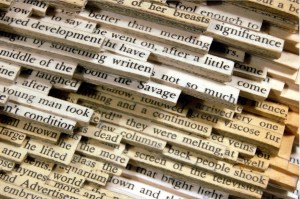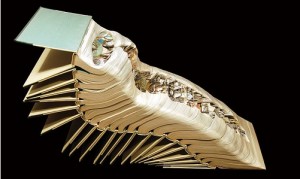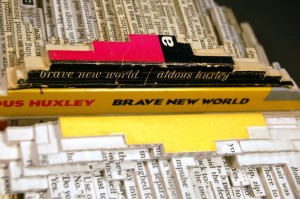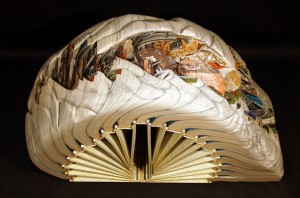Posts from — October 2009
Gaming
It has often been observed that film is the narrative genre of our generation. Ryan (2005) also points out that many game spaces have a narrative component, and ponders whether particular game forms–Massively Multiplayer Online Role-Playing Games, for example–will eventually win over the sorts of audiences that are traditionally attracted to literary fiction and film. Ryan’s query has relevance for educators: Might game spaces with a narrative component provide a catalyst for critical thinking not unlike fiction or film? Might gaming, often deemed a deterrent to reading, in fact provide a segue to fiction, particularly for reluctant readers? How might games requiring participants to write themselves into the narrative extend literary engagement?
In the next two weeks we’ll take a look at the “poles” of digital narrative described by Ryan, beginning with gaming and moving to e-literature. You may post your thoughts on the ideas posed above, the presentations we attended on Monday, the readings we’ll be taking up in class next week, or any other topic related to gaming.
October 27, 2009 22 Comments
Computer-Mediated Communication
In Eats, Shoots & Leaves, Lynn Truss writes the following about computer-mediated communication:
What to call the language generated by this new form of communication? Netspeak? Weblish? Whatever you call it, linguists are generally excited by it. Naomi Baron has called Netspeak an “emerging language centaur — part speech, part writing” and David Crystal says computer-mediated language is a genuine “third medium.” But I don’t know. Remember that thing Truman Capote said years ago about Jack Kerouac: “That’s not writing, it’s typing”? I keep thinking that what we do now, with this medium of instant delivery, isn’t writing, and doesn’t even qualify as typing either: it’s just sending. What did you do today? Sent a lot of stuff. (Truss, 2003, pp. 191-192)
Truss’s book is an interesting anomaly: a twenty-first century #1 bestseller on . . . punctuation? Reads the slipcover, “Through sloppy usage and low standards on the Internet, in e-mail, and now ‘txt msgs,’ we have made proper punctuation an endangered species.” The examples in the book, however, suggest that the Internet may have little to do with poor usage proliferating on billboards, shop signs, and the like (although it may have a good deal to do with priming the public for a book on punctuation).
This week’s readings take up the question of how computer-based forms of writing may be modifying language, and whether or not literacy educators need to be concerned.
October 20, 2009 20 Comments
Recontextualizing traditional text to represent a hypertextual experience?
This week’s readings reminded me of the work of Brian Dettmer. I’m adding a new post here so that it will allow me to insert the images. These pieces are neither hypertext or multimedia (as the terms are defined in our readings), yet one might consider them to be a hypertextual response to traditional forms of literacy, ironically using traditional (vs. new media) techniques; a reconceptualization of text that is reflective of the interactive and non-linear nature of hypertext, presented in non-interactive form.
Click on the pics to link to the original source and larger views. For more info on the artist visit http://www.briandettmer.com/
Brian Dettmer – Brave New World, 2008, altered books, 5-3/4 x 11 x 8 inches [Image courtesy of the Artist and Toomey-Turrell Gallery]
Brian Dettmer – Webster two point oh, 2008, altered book, 11-1/2 x 19 x 11 inches [Image courtesy of the Artist and Toomey-Tourell Gallery]
Brian Dettmer – World Books, 2009; Altered set of Encyclopedias, 19″ x 32″ x 10″ [Image courtesy of the Artist and Packer Schopf]
Brian Dettmer – Brave New World, 2008, altered books, 5-3/4 x 11 x 8 inches [Image courtesy of the Artist and Toomey-Tourell Gallery]
Brian Dettmer – New Books of Knowledge, 2009; Altered Set of Encyclopedias, 16″ x 26-1/2″ x 10″ [Image courtesy of the Artist and Packer Schopf]
October 17, 2009 3 Comments
Reading Spaces and Orientations
In the Digital Literacy chapter (Dobson and Willinsky, 2009), we provide a brief history of the introduction of hypermedia and its implications for literacy and learning (the section is subtitled “Hypermedia”). It may be useful to review this short section in addition to taking up the assigned readings for this week because the section raises a number of key issues that have been debated through the past twenty years, such as the following: 1) What are the implications of networked multimedia environments for learning? 2) How do readers, or “users,” experience such spaces? 3) How might different text structures modify reader experience (cf Bernstein, 1998)? 4) What are the merits or demerits of the “associationist” argument? The assigned readings offer perspectives on these issues and others. “As We May Think” is an historical article that is often cited as the first articulation of the hypertext concept; Gerjets & Kirschner (2009) and Salmerón et al (2005) take up the complex question of how reading processes are modified in hypermedia environments.
October 7, 2009 21 Comments
Visual Literacy & Visual Language in a Digital Culture
I posted comments about this topic on my own blog in relation to the Messaris reading. I have included a short video from youtube in connection to visual processing and gestalt, something I refer my students to. I have also started a resource list of art that addresses human relationships with technologies. I intend to add to it as ideas come and go throughout the course, but I want to open it up to everyone as your input will inform my understanding. Please reply with any thoughts on visual literacy/visual language at any time during the course – Thanks!
~ Heidi
October 4, 2009 No Comments




